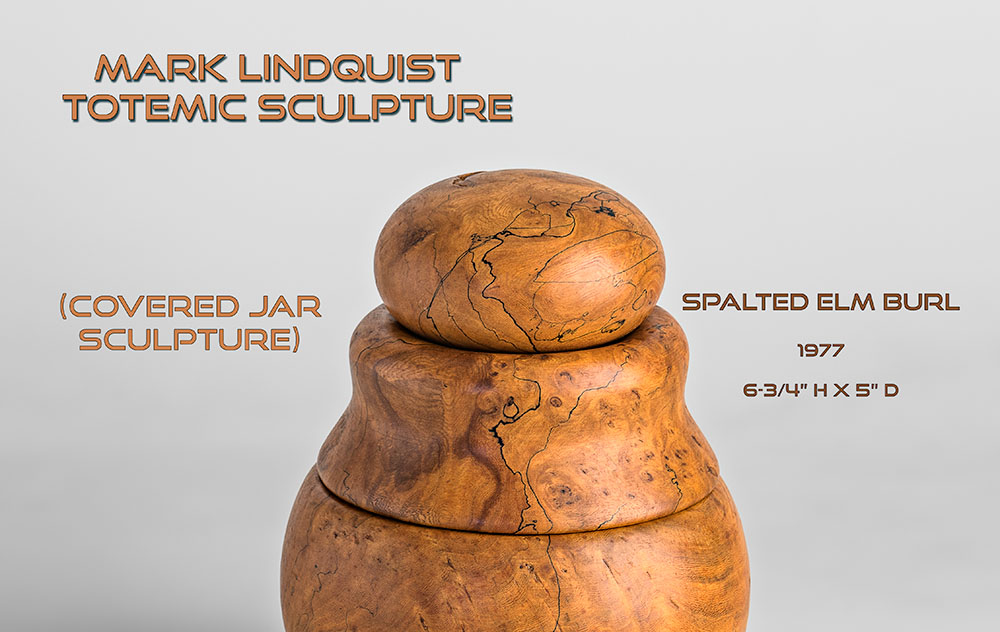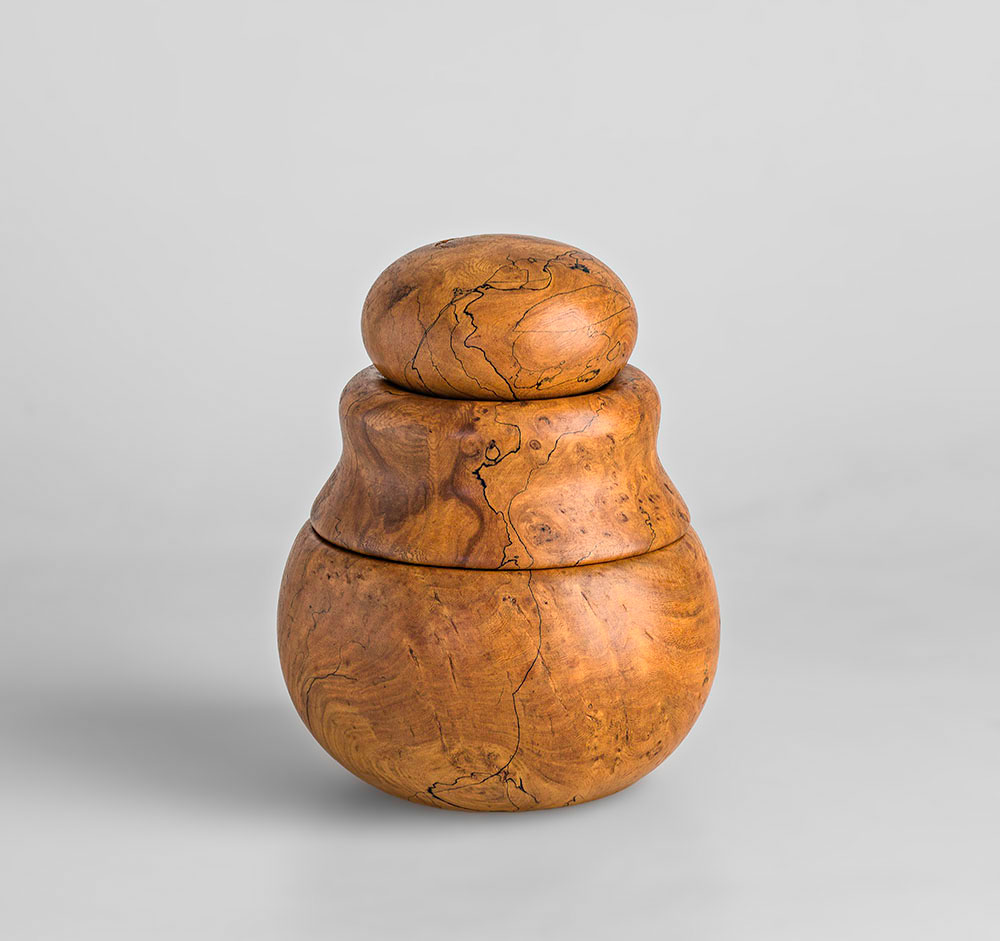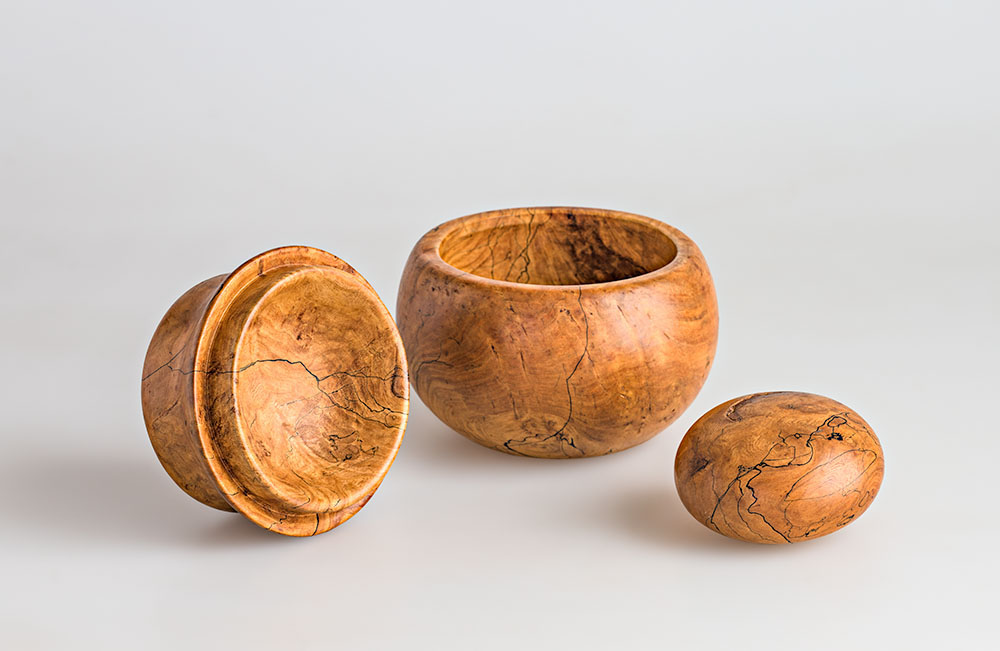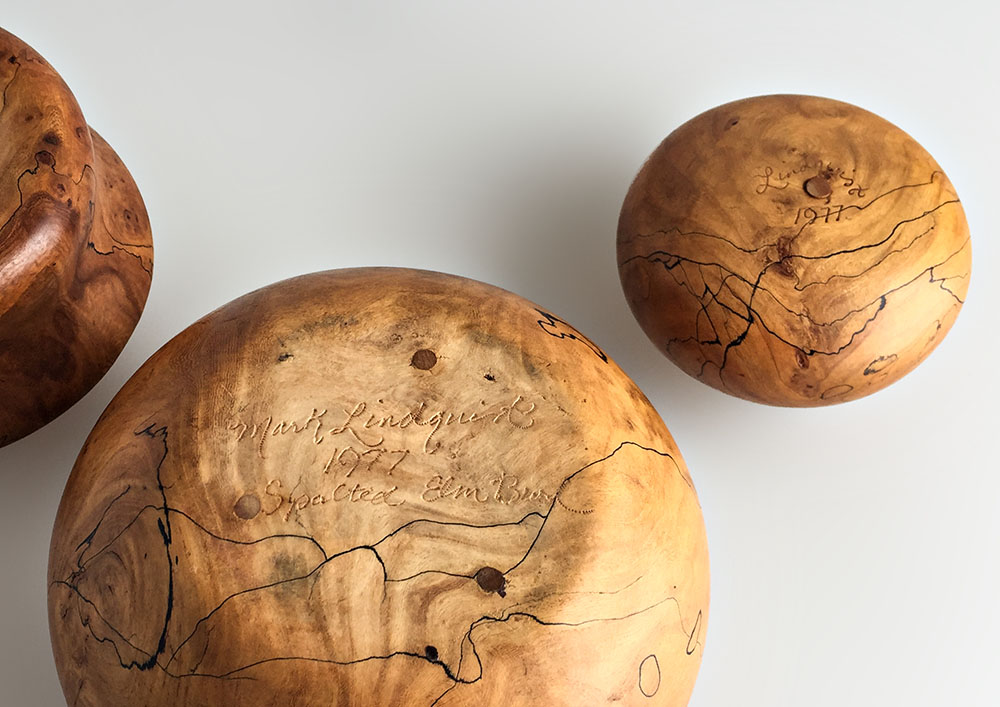|
|






|
| |
This Totemic Series Covered Jar (originally known
as Turned Covered Jar with Sculpture) is one of a
series of five related pieces made by Mark Lindquist in
the 1970s. These pieces went beyond the tradition of
wooden covered jars, which Lindquist also made during
that time, merging the concepts of utility (the covered
jar) and formal sculptural ideals (stacking, sculptural
form, and aesthetic function). Mark Lindquist created
this series in his Henniker, New Hampshire woodturning
studio.
The late 1970s was a period of peak productivity for
Lindquist, as he continued exploring the expression of
sculptural ideals through the wooden vessel form and
exhibiting his work through craft organizations,
including the League of New Hampshire Craftsmen and the
American Craft Council. He introduced concepts such as
the natural edge bowl, the captive bowl, and the full
bowl, that were at first disconcerting to the craft
audience, but received recognition by galleries and
museum curators and have since become mainstays of the
contemporary woodturning movement. His 1976 piece,
Brancusi Cup, which combines the concepts of
stacking and the natural edge bowl, was acquired by the
Metropolitan Museum of Art in 1978, as were his
Lapping Wavelet Bowl and two pieces by his father,
Melvin.
Lindquist created Totemic Series Covered Jar in
1977. Of all the small turned sculptures Lindquist
created in his studio from 1971-1980, he felt the
stacked covered jar forms were among the most exciting,
showing the potential for his turned wood sculpture to
increase to human scale. Covered Jar, and the
other pieces in its series, presaged the development of
the large turned and stacked sculptures (six to eight
feet in height) Lindquist made in the 1980s. These
"Totemic Series Sculptures" are in the collections of
the Dallas Museum of Art, Yale University, the
Smithsonian American Art Museum, and many others.
While focusing on larger sculptures in later years,
Lindquist has not neglected the pursuit of his vision
through turning smaller works, and many of these works
have also found homes in major museums. One of these
pieces, his 1994 So Long Frank Lloyd Wright Bowl,
continues the tradition of Totemic Series Covered Jar
by commenting on the major concepts of
utility, form, and sculptural expression in a
deceptively small piece, approximately eight inches
high. This piece is in the collection of the Victoria
and Albert Museum in London.
Melvin and Mark Lindquist introduced spalted wood into
the woodturning lexicon beginning in the mid-1960s.
Melvin had discovered spalted wood on his land in the
upstate New York Adirondacks. (See
Spalted Wood The Movie). After establishing
his studio in New Hampshire in 1969, Mark used a variety
of spalted hardwoods that he found in and around
Henniker. The spalted elm burl used for Totemic
Series Covered Jar came from a fallen Great American
Elm Tree that Lindquist discovered on his property.
|
|
|
Mark Lindquist
Totemic Covered Jar |
Spoonerism |
Captive of the
Spoon | 3 Spoons
| Sculptural
Spoon
|